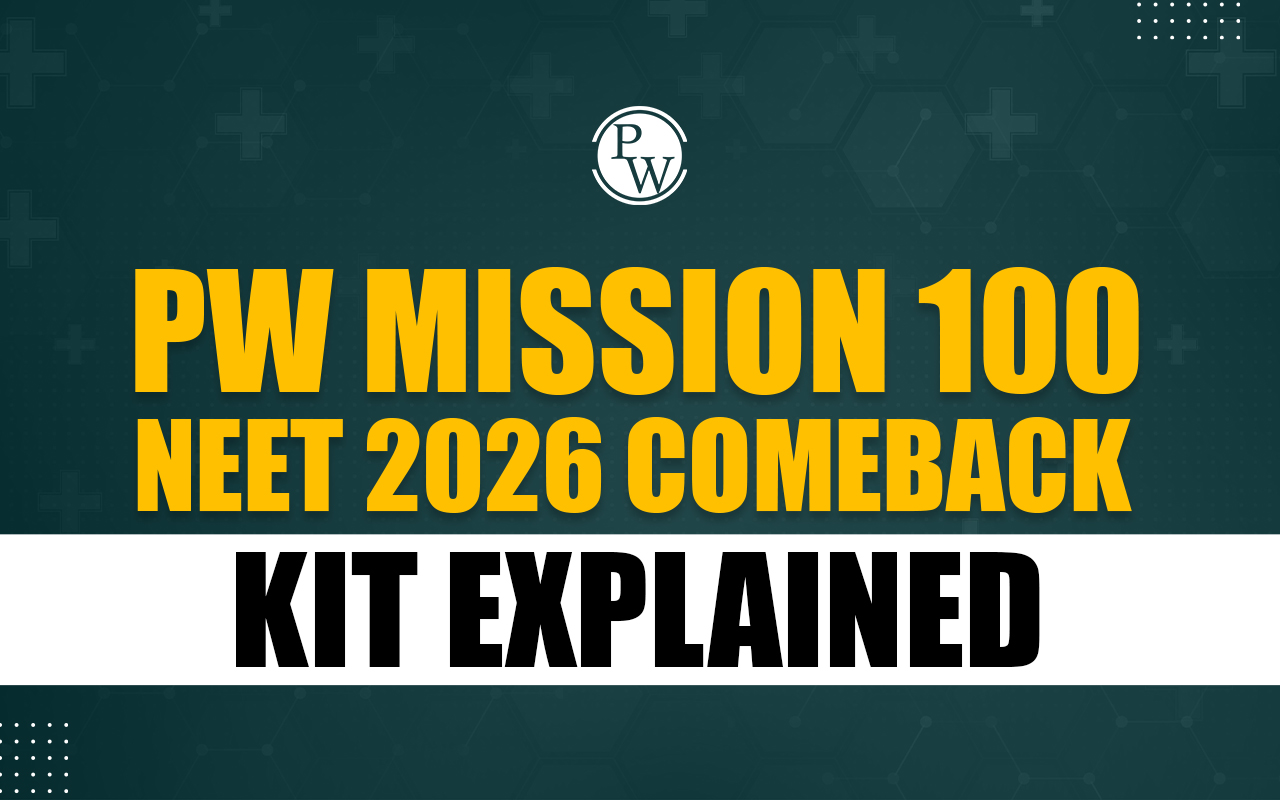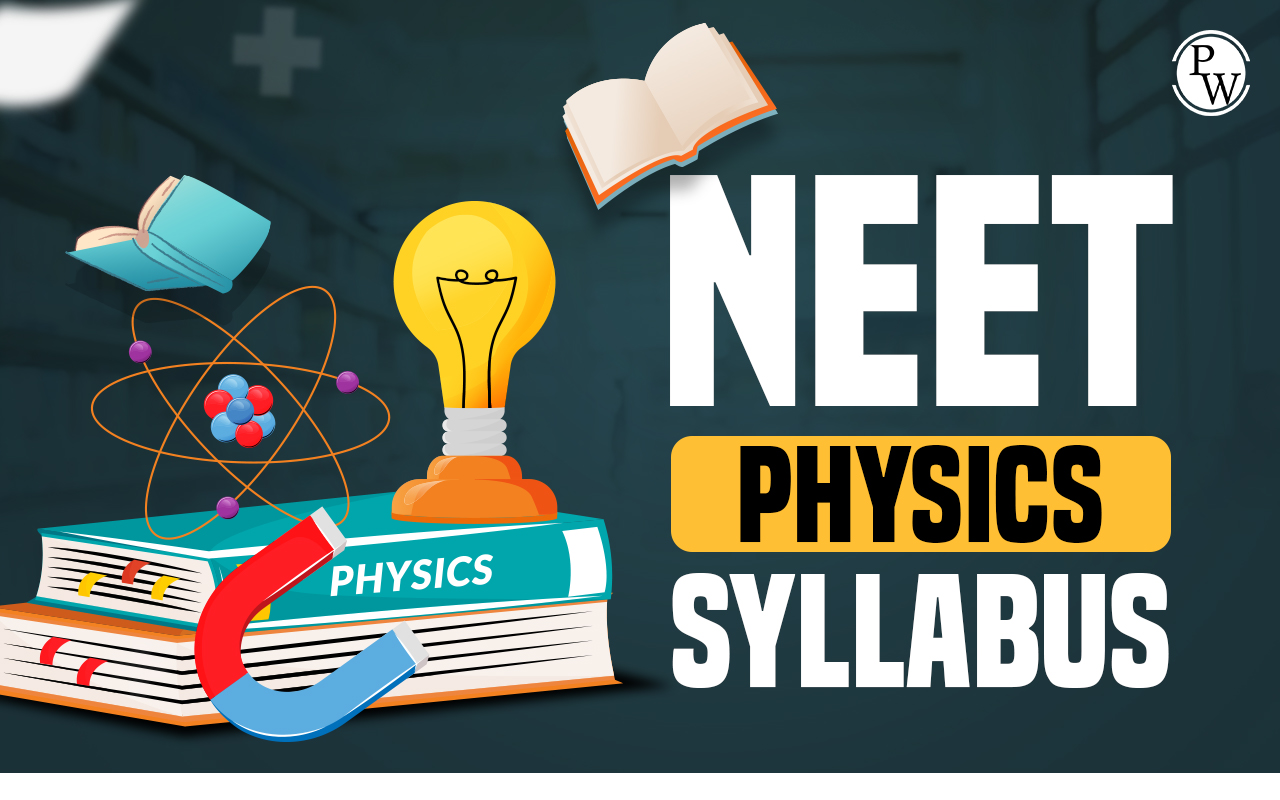
Anatomy MCQ For NEET Introduction
Anatomy is the study of the structural components, their arrangement, and constituents inside living organisms. Different types of cells combine together as a unit to form different tissues. For instance, the skin is an accumulation of a specific type of epithelial cell. Anatomical studies involve obtaining a thin layer of the cross-section of the target organ or tissue, placing it under a microscope, and observing its structural arrangement. Anatomical studies not only provide insight into the structure of the organ but also reveal some information about its function. For instance, food is able to pass through the esophagus because it is lined by ciliated epithelium as seen in the microscopic analysis. Anatomy along with Physiology is a very vital topic in the NCERT syllabus and holds nearly 18% weightage in the NEET examination. In this article, we will discuss a few multiple-choice questions based on Anatomy.| NEET 2024 Exam Important Links | |
|---|---|
| NEET 2024 Syllabus | NEET Biology Notes |
| NEET 2024 Eligibility Criteria | NEET Exam Pattern |
| NEET Previous Year Question Papers | NEET Admit Card |
Anatomy MCQ For NEET Biology With Answers
Explore our carefully selected collection of Multiple-Choice Questions (MCQs) on Anatomy for NEET Biology, designed to improve your knowledge of the composition and operations of the human body. With questions covering the skeletal system, muscular system, circulatory system, and more, these multiple-choice questions provide an extensive overview of the fundamentals of anatomy. We make sure you're ready for the test by creating questions that correspond with the NEET Biology syllabus. Examine the complexities of human anatomy with focused questions and thorough responses to strengthen your foundation of knowledge and give you an advantage in the NEET Biology segment.Anatomy MCQ
Q 1. The embryo is known as a ________ at the moment of implantation:
- Blastocyst
- Zygote
- Foetus
- Morula
Answer- Option (1) is correct.
Explanation: Early in a mammal's development, a blastocyst is generated. It has an interior mass of cells that eventually gives rise to the embryo. The cells that make up the outer layer are referred to as trophoblast. A zygote is the name for the cell formed immediately after the fusion of the gametes. Morula is the 16-celled stage of the embryo which occurs just before the 32-celled blastocyst stage. Foetus is a term used when the embryo starts to resemble the human form and the hands and legs have begun developing.
Q 2. The entry point of _____________ is the blastopore.
- Blastomere,
- Gastrula,
- Blastula,
- Archenteron.
Answer- Option (4) is correct.
Explanation: The beginning of Archenteron is Blastopore. the gastrula's archenteron, which in protostomes develops into the mouth and in deuterostomes into the anus. The invasion of the archenteron causes the endoderm and mesoderm cells to shift inward, forming the blastopore. Sometimes this movement is insufficient, preventing the development of open pores. During archenteron invasion, it defines the rudimentary streak of avian or mammalian embryos. It is referred to as a "virtual" Blastopore in this instance.
Q 3. __________ is produced by the trophoblast.
- Chorion;
- Neurula;
- Allantois;
- Placenta
Answer- Option (4) is correct.
Explanation: The blastocyst's outer layer is made up of cells called trophoblasts, which nourish the developing embryo and eventually become a sizable portion of the placenta. During pregnancy, the placenta is an organ that grows in the uterus. An infant developing in this structure receives oxygen and nourishment. Additionally, it purges waste materials from the baby's blood. The umbilical cord of the newborn grows from the placenta, which is attached to the uterus wall. Typically, the organ is affixed to the front, rear, side, or top of the uterus. Rarely, the placenta may adhere to the uterine lower portion. A placenta that is low to the ground is called placenta previa.
Q 4. _________ is another name for the synovial joint.
- Megablast,
- Periosteum,
- Diarthrosis,
- Arthrosis.
Answer- Option (3) is correct.
Explanation: Diarthrosis is another name for the synovial joint. It connects the bones together with a fibrous joint capsule that is continuous with the periosteum of the joined bones, forms the outer border of the synovial cavity, and encircles the articulating surfaces of the bones. Synovial fluid is present in the cavity of the synovium.
Q 5. __________ is not a synovial joint.
- The pivot joint;
- The fibrous joint;
- The ball-and-socket joint;
- The Saddle joint.
Answer- Option (4) is correct.
Explanation: In a synovial joint, one bone develops a knob-like enlargement while the other develops a depression. Smooth articular cartilages cover the ends of both bones. A synovial cavity containing synovial fluid exists between two bones. The pivot joint, ball and socket joint, and saddle joint allow movement in multiple directions and have synovial fluid in between the bones and therefore belong to the category of synovial joint. Fibrous joints are mainly composed of collagen and allow very restricted movement. They are not included in a synovial joint.
Q 6. Pivot joints include __________.
- Hip joints,
- Ankle joints,
- Radioulnar joints,
- Metacarpophalangeal joints
Answer- Option (3) is correct.
Explanation: A rotary joint is another name for a pivot joint. It only permits rotation along a single axis. A ring made of a second bone and an adjacent ligament spins around the moving bone. The distal extremities of the radius and ulna form the synovial junction known as the distal radioulnar joint. Pronation-supination motions are possible because of the uniaxial pivot joint, which is used in this joint. Forearm and hand rotations around the forearm's long axis are, to put it simply, what these movements are called.
Q 7. What statement regarding the monocot root's anatomy is false?
- In a root, the epidermis is the outermost layer.
- The endodermis possesses a Casparian strip, which prevents water escape from the vascular bundles and the invasion of foreign particles.
- Plasmodesmata are the connecting channels between parenchyma cells.
- There is a cambium between the xylem and phloem.
Answer- Option (4) is correct.
Explanation: In a root, the epidermis is the outermost layer. Because of the Casparian strip in the endodermis, foreign particles and water leakage from vascular bundles are prevented. Plasmodesmata are the pathways that link the parenchyma cells. In the region between the xylem and phloem, the cambium is missing.
Q 8. Which of the following statements regarding monocot stem is false?
- The vascular bundles in a monocot stem are dispersed,
- More than one conjoint vascular bundle exists,
- The cambium is missing,
- The cortex is present.
Answer- Option (4) is correct.
Explanation: The vascular bundles are dispersed throughout a monocot stem. There are several conjoint vascular bundles. Because the cambium is missing, secondary vascular bundle development is not feasible. There is no cortex. No ring of vascular bundles exists, hence there is no "inside" pith or "outside" cortex. The term "cortex" refers to the entire ground tissue.
Q 9. Which of the following claims concerning the monocotyledonous tissue system is false?
- A monocot leaf lacks buliform cells that aid in leaf curling, and b
- The entire plant is covered with an epidermis that shields it from outside harm.
- In the stem of a monocot, the vascular bundles are neither radial nor conjoint.
- A monocot stem lacks a pericycle.
Answer- Option (1) is correct.
Explanation: The monocot leaf has buliform cells that aid in the curling of the leaves. The entire plant is covered in epidermis, which shields it from environmental harm. Monocot stems have neither radial nor conjoint vascular bundles. Stem pericycle is absent in monocots.
Q 10. Which of the following statements regarding the anatomy of a monocot leaf is false?
- Both the abaxial and adaxial epidermis include stomata.
- The mesophyll is highly divided between palisade and spongy parenchyma cells.
- Veins and the mid-rib include vascular bundles that are encased in thick-walled bundle sheaths.
- Parenchyma cells make up the bulk of the cells.
Answer- Option (2) is correct.
Explanation: Stomata can be seen on both the adaxial and abaxial epidermis. Undifferentiated mesophyll exists. In veins and the mid-rib, vascular bundles may be observed; they are encased in a thick-walled bundle sheath. They are parenchyma cells for the most part.
Q 11. Which of the following statements regarding the vascular bundles in the monocot stem is false?
- The vascular bundles are of the open type,
- There are several vascular bundles present.
- They are dispersed
- They are encircled by sclerenchymatous bundle sheaths.
Answer- Option (1) is correct.
Explanation: A monocot stem contains many vascular bundles. The vascular bundles are closed in nature. They're dispersed. Sclerenchymatous bundle sheaths around them.
Q 12. The urethra exits the penis through which region.
- Corpora cavernosa
- The corpora spongiosum
- The Tunica albuginea
- The Prepuce
Answer- Option (2) is correct.
Explanation: The area of spongy tissue within the penis that surrounds the male urethra is known as the corpora spongiosum. It is termed cavernosum urethrae or corpus at times.
Q 13. Which area of the brain controls appetite and body temperature?
- Pons
- Thalamus
- Hypothalamus
- Cerebellum
Answer- Option (3) is correct.
Explanation: The hypothalamus monitors a person's current body temperature and compares it to 37 degrees, which is considered normal. The hypothalamus ensures that our body produces and maintains the necessary temperature when our body temperature is low.
Q 14. Which of the following joints cannot be moved?
- Synovial joint
- Ball and socket joint
- Fibrous joint
- Cartilaginous joint
Answer- Option(3) is correct.
Explanation: Due to their immobility, fibrous joints are frequently referred to as fixed or immovable joints. These joints lack joint chambers, just as the sutures, gomphosis, and syndesmosis. Dense connective tissues, primarily made of collagen, are used to link these.
Q 15. The deepest layer of the cortex where Casparian thickenings in the cell are seen is known as
- Pericycle
- Epidermis
- Exodermis
- Endodermis
Answer- Option (4) is correct.
Explanation: The endodermis plays a crucial role in controlling the flow of hormones, ions, and water from the vascular system's inside to its outside. Additionally, it plays a part in the storage of starch, the feeling of gravity, and other functions.
Anatomy MCQ For NEET Biology With Answers FAQs
Q1. How can I access these Anatomy MCQs for NEET Biology preparation?
Q2. Are there specific topics covered in these Anatomy MCQs that are commonly tested in the NEET Biology examination?
Q3. How can I optimize my NEET Biology preparation using these Anatomy MCQs?
Q4. Are these Anatomy MCQs updated to align with the latest NEET Biology syllabus?










